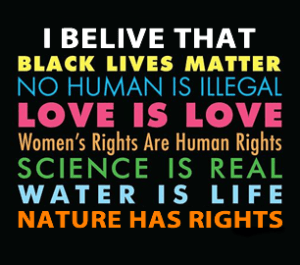Environmental Justice and the Global Rights of Nature Movement – New EPT Book Chapter
I’m excited to share that another of my articles, this time a book chapter on environmental justice and the Rights of Nature movement, has just been published in the Palgrave Handbook of Environmental Political Theory (edited by Joel Kassiola and Timothy Luke). This new EPT handbook was just released this past month, and has a number of excellent looking articles in it which I look forward to reading.
Here is the abstract for my chapter:
Support for treating nonhuman beings as political subjects deserving of respect and rights has grown considerably since 2000. Behind this trend is a global Rights of Nature movement and emerging concepts of Earth Rights and Earth Jurisprudence. This movement has introduced important legal innovations, most famously in Ecuador. Many participants in these movements share a common belief that winning political recognition for nature is a necessary step in protecting the Earth, despite debates over the success of this approach. Environmental justice movements focused on defending the planet against the ravages of extractive capitalism have increasingly framed their activities through the language of rights and justice. Using the Lake Erie Bill of Rights (LEBOR) as a case study of this movement, this chapter analyzes these movements, their expressions of the boundaries of belonging, and explores how local communities are involved in efforts to promote the global Rights of Nature.
 And here’s a teaser from the beginning of the chapter, which begins to lay out in a bit more detail the focus of my chapter and what I see as the importance of these new global Rights of Nature movements.
And here’s a teaser from the beginning of the chapter, which begins to lay out in a bit more detail the focus of my chapter and what I see as the importance of these new global Rights of Nature movements.
The Earth is in trouble. Everywhere you look things are falling apart. Since 2020 we have faced a global coronavirus pandemic, an expanding global climate crisis, growing authoritarian and racial violence, widening social inequity and collapsing social safety nets driven by disaster capitalism. And yet, all around the world social movements are fighting back against these bleak trends by offering a radically different vision for the future. This vision is rooted in a belief that all life on the planet is deeply and irrevocably interconnected. Advocates of this view point to an emerging paradigm shift in how we think about and relate to the Earth, a shift rooted in the belief that the natural world has an inherent right to exist and flourish. In recent years, this belief became a rallying cry of the global Rights of Nature (RON) movement, a social movement that aims to expand the conceptual and legal boundaries of rights and justice. My central argument is that this movement marks the start of a new phase of global environmental justice politics, one that is finally moving away from the shackles of anthropocentrism and liberalism that shaped and defined earlier generations of environmental justice movements and associated politics.
Looking back at the early movements against environmental racism in the 1980s allows us to see just how far movements for environmental justice (EJ) have come, and why this new Rights of Nature movement might represent the next stage of movement evolution. Writing in 1994, environmental justice scholar Robert Bullard argued that “A new form of environmental activism has emerged in communities of color. Activist have not limited their attacks to well-publicized toxic contamination issues but have begun to seek remedial action on neighborhood disinvestment, urban mass transportation, pollution, and other environmental problems that threaten public safety.” Discussing this “new” Environmental Justice Movement a few years later, Luke Cole and Sheila Foster noted what was significant about this movement was how “it transforms the possibilities for fundamental social and environmental change through redefinition, reinvention, and construction of more innovative political and cultural discourses and practices…and the forging of new forms of grassroots political organization.”
In the decades since these descriptions were written the environmental justice movement has grown in important ways. Most visibly, it has expanding beyond the initial focus on toxins in urban communities of color in the United States, although this remains an important aspect of EJ movements today. Environmental justice movements today are far more diverse than those of the 1980s and they are focused on a wide range of global issues. With this EJ movement landscape, the youth-led climate justice wing arguably represents the most radical and cutting-edge spaces where political innovation and activism is taking place, in part thanks to the growing leadership role of Indigenous youth and women of color in these movements.
The global Rights of Nature movement is at the forefront of the process of “redefinition, reinvention, and construction of more innovative political and cultural discourses and practices” described by Cole and Foster. In what follows I explore how the rethinking of the boundaries of environmental justice challenges traditional understandings of, and organizing on, environmental justice issues. By challenging the long-standing liberal and anthropocentric conventions which treat nature as a static object to be acted upon by humans, rather than as a rights-bearing subject, activists for the Rights for Nature are testing the definitional limits of environmental justice and political rights. Given the rapid growth of this movement, I argue scholars interested in environmental politics and environmental political theory should pay close attention to how this movement is reframing the discursive and legal landscape of environmental justice politics.
I’m excited to have these ideas finally out in public circulation. Some of this came out of my dissertation work a few years back (Rights of Nature movement as part of a larger Anthropocene environmentalism), while others bits, such as the focus on LEBOR and Lake Erie, are from my more recent work. I’m not happy about the high cost of the hardback or e-book right now, but sadly that’s out of my control.


